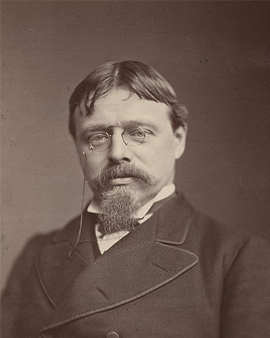Sir Lawrence Alma-Tadema stands as a leading figure of Victorian historicism, whose paintings open windows into an idealized antiquity. His works are marked by meticulous attention to detail, transporting viewers directly into the world of ancient Rome and Greece. The compositions are carefully constructed, with masterfully chosen perspectives that evoke a sense of grandeur and spaciousness. Alma-Tadema excelled at rendering architecture, marble, and textiles with almost photographic precision, always placing light at the heart of his scenes. Surfaces gleam as if bathed in Mediterranean sunlight, creating an atmosphere of luxury and tranquility. His figures, often depicted in contemplative or introspective poses, appear as snapshots from a bygone era, yet possess a timeless quality.
Alma-Tadema’s choice of subject matter revolves around scenes of daily life, celebrations, and private moments from antiquity, focusing less on historical events and more on the emotions and experiences of individuals. His works exude a subtle sensuality, evident in the depiction of fabrics, skin, and marble. During his lifetime, his art was met with great admiration; Alma-Tadema was celebrated for his technical brilliance and his ability to bring history vividly to life. His influence extended far beyond painting, inspiring stage designers, filmmakers, and artists in other disciplines. The impact of his work lies in the fusion of archaeological accuracy with artistic imagination, evoking a longing for beauty and harmony. Even today, his paintings captivate with their opulent aesthetics and masterful command of color, light, and composition.
×





.jpg)
.jpg)
.jpg)
.jpg)
.jpg)
.jpg)
.jpg)
.jpg)
.jpg)
.jpg)
.jpg)
.jpg)
.jpg)
.jpg)
.jpg)
.jpg)
.jpg)
.jpg)
.jpg)
.jpg)
.jpg)
.jpg)




